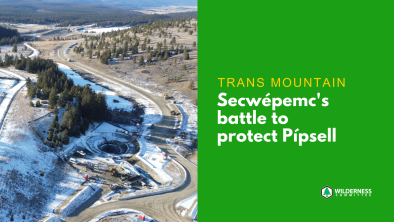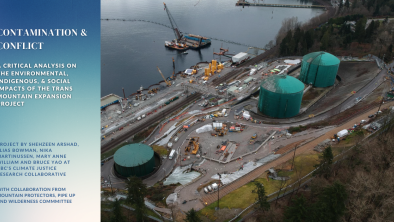Preventing a Pipeline From Bisecting Canada
The New York Times

Along Canada’s Pacific coast, the salt air engulfs you. A bald eagle swoops into the surf. An orca breaches. This is the view from the small coastal city of Kitimat in northwestern British Columbia – at least, for now. Soon the vista may be very different.
Enbridge, a Canadian oil company, hopes to build two pipelines here, running 1,171 kilometers (about 728 miles) between Alberta and the shores of Kitimat. One pipeline would carry imported natural gas inland. The other would carry crude from the Athabasca oil sands, to be exported from Kitimat on ships bound for Asia. The company calls this the Northern Gateway Pipelines Project.
A proposed pipeline is better understood as a new border that, like the Berlin Wall or the D.M.Z., would split communities apart.
But are these pipelines truly a gateway? The word suggests an opening, between Canada and Pacific Basin markets. But the reality of these pipelines would be a closing: The project is better understood as a new border. Like the Berlin Wall or the Korean Demilitarized Zone, it threatens to split entire communities apart, devastating ecosystems and livelihoods.
If completed, this border would cut across indigenous territory, interfering with the land use of more than 50 First Nations communities, including members of the Coastal First Nations and Yinka Dene Alliance. Environmental groups like Forest Ethics and the Wilderness Committee warn that the pipelines would disrupt and displace the lives of people and other creatures, jeopardizing grizzly bears, caribou and salmon. Even before construction, the prospect of a pipeline is dividing people in a debate framed as jobs vs. environmental protection.
In June, despite broad opposition, the Canadian government conditionally approved the project. A final decision has not been made, as Enbridge must still prove that it can meet 209 conditions identified by an independent regulator, the National Energy Board, which will include consultations with the people living along this route.
Citizens are not passively waiting for consultation. Environmentalists opposing the decision launched sit-ins in parliamentary offices. Forest Ethics vows to make the pipeline a federal election issue in 2015. Canada's New Democratic Party and liberal opposition parties have spoken out against the project. A coalition of First Nations issued a statement rejecting the decision. And the Dogwood Initiative is preparing a referendum to stop the project.
A provisional stamp of approval does not determine the fate of this pipeline. Citizen resistance coast-to-coast actively demonstrates that there is still time to speak out against this dangerous and divisive new border.


